Important note:
Your safety is of paramount importance to us at the Alpine Club of Himalaya. We reserves the right to cancel or modify your Gokyo and Everest trek itinerary for safety reasons. This may be due to weather, health concerns, natural disasters, or other unforeseen circumstances. In such extreme situations, your full cooperation with the appointed trip leader is essential. However, we assure you that we will make every effort to keep to the above itinerary.Detailed Itinerary:
Upon arrival at the Kathmandu, Tribhuvan International Airport. A representative from the Alpine Club of Himalaya will assist you with your accommodation. Upon arriving at your hotel, rest for a while. In the evening join in for a special dinner program where you will experience excellent Nepalese cuisine.
Overnight at Hotel.
Meals: welcome dinner
After breakfast head towards the domestic airport and catch a flight towards Lukla. Lukla is regarded as the gateway to the Everest region. The thrilling flight will take you flying amidst the grand Himalayas. Upon landing at Lukla and after a brief stop, start your trek.
Following the descending trail, you will reach the village of Cheplung, from the village witness the view of Mt. Khumbila known as the "God of Khumbu". The sacred peak is prohibited to climb, making it one of the unclimbed peaks in the region. From Cheplung, continue the trek along lush woodland on a descending trail towards Phakding.
Overnight: Tea House
Meals: Breakfast, Lunch, Dinner
Today you will be heading towards Namche Bazaar. The Sherpa capital and economic hub of the region, where you can find basic to grandeur amenities. Start your trek traversing across the dense wilderness of the Khumbu region. Crossing through the hamlet of Zamphute and Tok Tok. Following uphill and downhill trails and crossing multiple suspension bridges over the rapids of the Dudh Koshi River. Along with this section witness the magnificent view of Mt. Thamserku (21,675ft) and you will pass the settlement of Benkar and Chumoa.
As you progress from here you will reach the Sagarmatha National Park entrance at Monjo. After your permits are checked, head on an uphill climb towards Namche Bazaar following a steep path over a high bridge with views of the Dudh Koshi River gorge. As, you gain elevation witness views of Everest, Lhotse, Tawache, and other mountain giants. Upon reaching Namche head towards your accommodation and rest.
Overnight: Tea House
Meals: Breakfast, Lunch, Dinner
Today is your acclimatization day. At higher altitudes due to the presence of thin air proper acclimatization is very important for your body to adapt. The settlement has various vantage points perfect for acclimatization hikes.
Before dawn head out to witness the Himalayan sunrise strolling around the village. After breakfast head towards the settlement of Khumjung. Start by traversing a U-shaped hill above Namche Bazaar. Along the way witness grand views of the Kwangde, Khumbila, Thamserku, Tagi Tau, and Pharchamo, the tip of Ama Dablam and Taboche. As you progress you will reach an intersection from here take the right trail. Following the trail, you will walk past a large Chorten and a series of mani walls, which leads you to “THE EVEREST VIEW HOTEL”. One of the highest-located hotels on the planet. At the hotel have your lunch with views of Lhotse and Lhotse Shar ( East ) peak, Thamserku, Ama Dablam, and Taboche.
After lunch head towards the Khumjung School established by Sir Edmund Hillary. Next head towards the Khumjung Monastery which stands magnificently in a grove of cedar in the upper part of the village where there is an image of the Guru Padmasambhava, who helped establish Buddhism in Tibet, flanked by his two consorts. Inside the gompa is a preserved skull that lamas believe is that of the yeti. After exploring the monastery head towards Namche and soak in the views of the sunset from the porch of your tea house.
Overnight: Tea House
Meals: Breakfast, Lunch, Dinner
After breakfast start your trek toward Tengboche. The first section of the trail takes you across an easy trail that cuts around the ridge from Chhorkung to reach the end of a bluff zone. From here witness the grand panorama of the mountain peaks, from Thamserku to Ama Dablam, Lhotse, and the mighty Everest.
Following the trail, you will reach the village of Kyangjuma at an elevation of 3550 meters. From Kyangjuma after a short walk, you will reach an important trail junction at Sanasa from where take the trail towards Lawichasa which runs gently downhill towards the river. Along this section witness, a picture view of the thumb-like peak of Ama Dablam soaring into view above the trail. From Lawichasa narrow trail branches north to reach Tashinga (3380m) and now the trail drops down on steep stone steps to Phunki Thenga (3250m) and then to a bridge.
From the bridge, the trail climbs past some water-powered prayer wheels and begins a sustained climb through a forest of tall, mature rhododendrons. Along this section keep an eye out as you may witness the wildlife of the region. As you progress out of the deep wilderness you will reach a Kani gate and a pair of Chortens, which marks the starting of Tengboche village. The village is nestled across a wide, grassy saddle below a crescent-shaped ridge covered by scrub pines and rhododendrons.
The focal point of Tengboche is the famous Tengboche monastery. After checking in head out to visit the Tengboche monastery.
Overnight: Tea House
Meals: Breakfast, Lunch, Dinner
Following the downhill trail, covered with a deep forest of conifers, birch, and rhododendrons you will reach Debouche. From here cross the raging Imja Khola and follow the trail toward the Imja Valley. Following the trail, you will reach the village of Pangboche nestled at an elevation of 3900 meters, which is the highest permanent settlement in this valley.
From this point, the tree line disappears and you will be traversing high mountain country with arid landscapes. Following a ledge above the river, the trail crosses a wooden bridge at the confluence of the Khumbu and Imja Khola. A short steep climb brings you to Dingboche, at 4530m. Dingboche is a summer settlement and from here witness grand views of the great peaks of Ama Dablam, the ridge of Nuptse-Lhotse, Tawoche, and Cholatse.
Overnight: Tea House
Meals: Breakfast, Lunch, Dinner
Today is your second day of acclimatization. Before dawn head towards any vantage point and witness the grand views of the sunrise. After lunch head towards Nangkartsang Peak, one of the most spectacular viewpoints of the Khumbu region. The ascent is easy with no technical difficulties, but the altitude can be a problem so take it slow and have frequent rest.
Upon reaching the summit witness the grand views of the landscape. The wide Imja valley, majestic views of Mt. Makalu (8,463m), Lhotse (8,749m), Cho Oyu (8,201m), Island peak (6,189m), AmaDablam (6,812m), Kangtega (6,782m), Thamserku (6,623m), Taboche (6,542m), Cholatse (6,440m), endless other peaks and the Imja Glacier. After exploring around and soaking in the tranquil energy retrace your steps back towards Dingboche.
Overnight: Tea House
Meals: Breakfast, Lunch, Dinner
Today you will be crossing another mountain pass. Traversing across high mountain country with arid landscapes and stony trails, you will reach the settlement of Chhukung. After a brief rest at Chhukung head out to scale the Chhukung Ri. The climb to the Ri is non-technical whereas altitude can be a problem for some. So, take frequent rest and stay hydrated. Upon reaching the summit witness spectacular views of the landscape. Witness beautiful views across the valley and the mountain peaks of Ama Dablam, Imja Tse, Nuptse, Makalu, Lhotse, Cholaste, Tawache peak, Kantega peak, Thamserku, and Baruntse stand tall in their grandeur. After exploring around and soaking in the views retrace your steps back towards Chhukung.
Overnight: Tea House
Meals: Breakfast, Lunch, Dinner
Today's trek will take you across yet another mountain pass. Start early as the mountain weather can degrade as the day progress. The pass you will be crossing is the most difficult so far. After breakfast head towards the trail turning away from the main valley and ascending a hill towards Kongma La. As you gain altitude witness grand views of the region, the ridge of Nuptse, the glaciers of Kongmatse ahead, and the rocky peak of Pokalde to your left. As you progress you will come across a small lake and from here after a steep ascent you will reach the summit of Kongma La pass at an elevation of 5,535 meters.
From the top witness picturesque Mountains, glaciers, icefalls, and lakes. The white mountains of Ama Dablam, Thamserku, Island peak, Makalu, Cho you, Everest, Pumori, Nuptse, and Lhotse stand tall. After a brief rest descent towards the Khumbu glacier moraine. Traversing along the moraine you will eventually reach the village of Lobuche, tiny yak pastureland with a few teahouses. From, the porch of your tea house witness the grand views of the sunset.
Overnight: Tea House
Meals: Breakfast, Lunch, Dinner
Start early today as you will have to cover a lot of ground today. Traversing across high pasture lands and arid rocky terrain with scattered boulders, with views of the Himalayas. A 60m/200ft ascent will bring you to Thangma Riju the summit of the moraine wall of the Changri Glacier. From here witness a spectacular 360-degree panorama of the mountains around: Taboche, Lobuche peaks, Pumori, and the rest of Mahalangur Himal peaks, with views up to Tibet and Nuptse filling the eastern horizon.
Next crossing the moraine of the Changri glacier eventually joins the Khumbu glacier from the west. Take extra caution as the tracks a steep with stony slopes, after a brief walk you will reach Gorak Shep. Catch the first glimpse of Kala Patthar from here, a renowned vantage point of the region.
After a brief rest at Gorak Shep and leaving your heavy backpacks head towards Everest Base Camp. Traversing along the turquoise water Gorak Shep Lake with views of Changtse peak in Tibet and the Lho La depression. Crossing glaciers, icefalls, frozen pools of meltwater, exposed icy walls, and large boulders you will finally reach the Everest Base Camp. After basking in the foothills of the world's highest peak retrace your steps back to Gorak Shep.
Overnight: Tea House
Meals: Breakfast, Lunch, Dinner
Today wake up before dawn and head towards the famous vantage point of the Khumbu region, Kala Patthar at an elevation of 5545 meters. Apart from the altitude, the climb is non-technical. Upon reaching the summit basking in the views of Everest, Pumori, Nuptse, Changtse, Ama Dablam, Taweche, Kantega, Lhotse, and even Everest base camp snuggled at the base of the Khumbu Ice Fall. After spending a brief time at the summit retrace your steps back to Gorak Shep.
Upon reaching Gorak Shep and after a brief rest head onward to Dzongla, at the base of Cho-La Pass.
Overnight: Tea House
Meals: Breakfast, Lunch, Dinner
After an early start breakfast, head to Thangnak. The path will take you westward from Dzongla and makes it way towards the formidable Cho-La Pass, situated at an altitude of 5420 meters. The ascent towards the highest point of the valley will be a test of your endurance and strength. However, the stunning views of Chola Lake and Mt. AmaDablam will make it all worth it. The climb will be challenging, as the rocks may be icy and rugged, but the exhilaration of reaching the top of the pass will be unmatched. After relishing the spectacular scenery, we will make our descent towards Thangnak.
Overnight: Tea House
Meals: Breakfast, Lunch, Dinner
Today you will be heading to the charming village of Gokyo, nestled at the foot of the imposing Mt Gokyo. The trail promises to be an exciting journey, filled with awe-inspiring views of towering mountains.
As you start the trek, you will continue uphill on a scenic trail that offers a spectacular vista of Tanjung Tsho Lake, nestled at an altitude of 4710m. Next the trail will take you along the edge of the Ngozumpa Glacier, the longest glacier in Nepal, stretching over 36 km. After crossing the glacier, you will be greeted by breathtaking views of Gokyo Lake. As you make your way towards the village of Gokyo, soak in the serenity and beauty of the surroundings.
Overnight: Tea House
Meals: Breakfast, Lunch, Dinner
Today you will be exploring the wonders of the Gokyo region. Before dawn witness the Himalayan sunrise. After breakfast head out to explore the series of Gokyo Lakes. The region nestles the world's highest freshwater lake system comprising six main lakes and associated wetlands of 7,770 ha (30.0 sq mi) which has been designated a Ramsar site. The lakes also have cultural significance and are visited by Hindu and Buddhist devotees at various festivals.
Explore the emerald, green lakes, and soak in the energy. After exploring the 3 lakes located in small proximity of the tea house. Next head out to explore the fourth Gokyo Lake which is 3km north of the Gokyo Village. Next, continue trekking towards the 5th lake. The view from ‘Scoundrel’s Viewpoint’, located at the edge of the 5th lake, is astonishing. Cho-Oyu, Gyachung Kang, Everest, Lhotse, Nuptse, and Makalu mountains, and the huge Ngozumba Glacier appear in its majestic form. Spend the day strolling around the lakes and visiting other sacred lakes.
For an alternative acclimatization excursion head towards Gokyo Ri. Gokyo Ri is the highlight of the Gokyo valley and is an epic vantage point for the mountain views. Following an uphill section will lead you to the summit of Gokyo Ri, start by traversing across the stream on the northern end of the village and ascending for a couple of hours and you will reach the summit marked by a cradle of prayer flags. The climb is non-technical, but the altitude may be a problem for some, so take it slow and have frequent rest. From the summit, witness splendid panoramic views of Cho Oyu, Everest, Lhotse, Makalu, Cholatse, and Taboche, with the Ngozumpa Glacier cutting across in front like a massive tear in the landscape. Catch the views of a series of emerald, green lakes. After exploring the Ri and soaking in the majestic views retrace your steps back towards the village.
Overnight: Tea House
Meals: Breakfast, Lunch, Dinner
Following the banks of the Dudh Pokhari, a high glacier lake start your trek. From the lake head on a downward trail towards the base of the pass. Along the way witness grand views of the Mahalangur Himalayan and Rolwaling ranges and other endless peaks. The climb to the summit of the pass takes you traversing on an inclined surface. Upon reaching the pass witness the views of the third Gokyo Lake and Gokyo Village beneath the gray smear of the Ngozumpa Glacier.
From the pass, the path winds down a stone staircase and then moves over loose scree to get to the south bank of Angladumba Tsho Lake. Along the way witness views of Relama Tsho and Renjo Lake. Traversing along a narrow valley clogged with giant boulders you will reach the isolated settlement of Lumde. From here about an hour’s hike will lead you to the settlement of Marlung nestled on the east bank of the Bhote Koshi River.
Begin your day early, before dawn, to embark on your final high pass of the trek. Following the trail at the end of Gokyo Lake, you will be greeted with mesmerizing views of Mt. Everest, Lhotse, Cholatse, and Taboche. Next scale the Renjo La Pass.
Once you reach the top of Renjo La Pass, you will be rewarded with panoramic 360-degree views of the majestic Mt. Cho-Oyu and other towering peaks. Take a moment to catch your breath and soak in the stunning surroundings before continuing your journey.
The next part of the trek will take you to the frozen lakes below Renjo La Pass, adding to the already breathtaking scenery. As you make your way downhill towards the small village of Lungdeng, you can relish the tranquil ambiance of the surroundings. The trail will then lead you to Marlung village, situated just above the Bhote Koshi River.
Overnight: Tea House
Meals: Breakfast, Lunch, Dinner
Following the downward track, crossing lush sections of woodlands, raging river networks, and various settlements head towards Monjo. Upon reaching the settlement rest and relax.
Overnight: Tea House
Meals: Breakfast, Lunch, Dinner
Follow the downhill trail to reach Phakding. Next crossing various landscapes reach Lukla. Upon reaching Lukla, rest for a while. Later celebrate the success of your trek and the last night in the mountains with your team members.
Overnight: Tea House
Meals: Breakfast, Lunch, Dinner
The flights to Kathmandu are usually scheduled for the morning for safety purposes. After reaching Kathmandu head towards your accommodation and rest. Today you can take a guided tour of the city or stroll by on your own. In the evening, attend a farewell dinner to celebrate the successful completion of your trek.
Overnight: Hotel
Meals: Breakfast. Farewell Dinner.
Today bid your goodbyes to Nepal and the friends you made along the journey. A company representative will pick you up from your hotel and drop you off at the airport 3 hours before your scheduled flight.
Meals: Breakfast.
NOTE: All of the aforementioned trekking hours are approximations and should only be used as a general guideline.









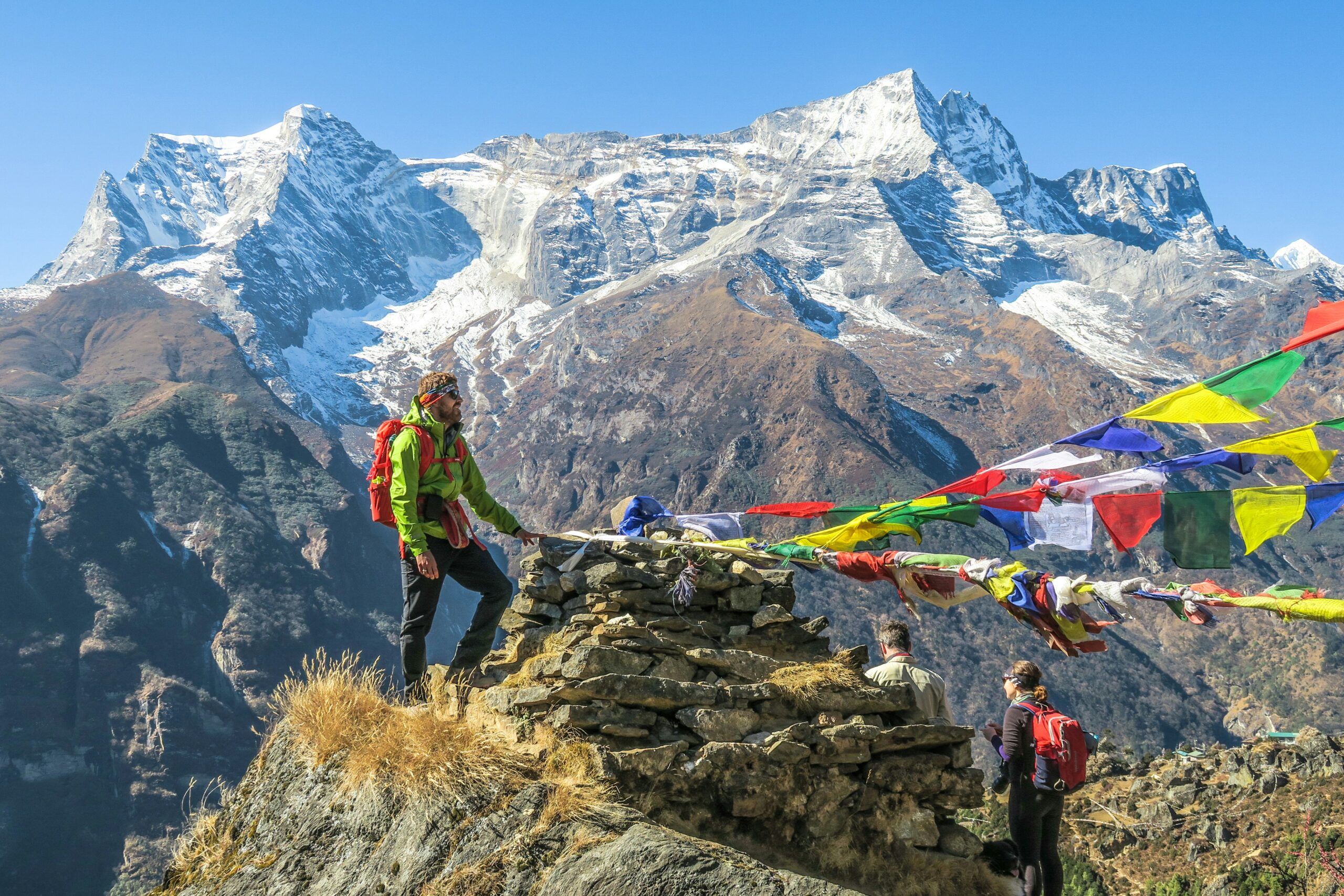
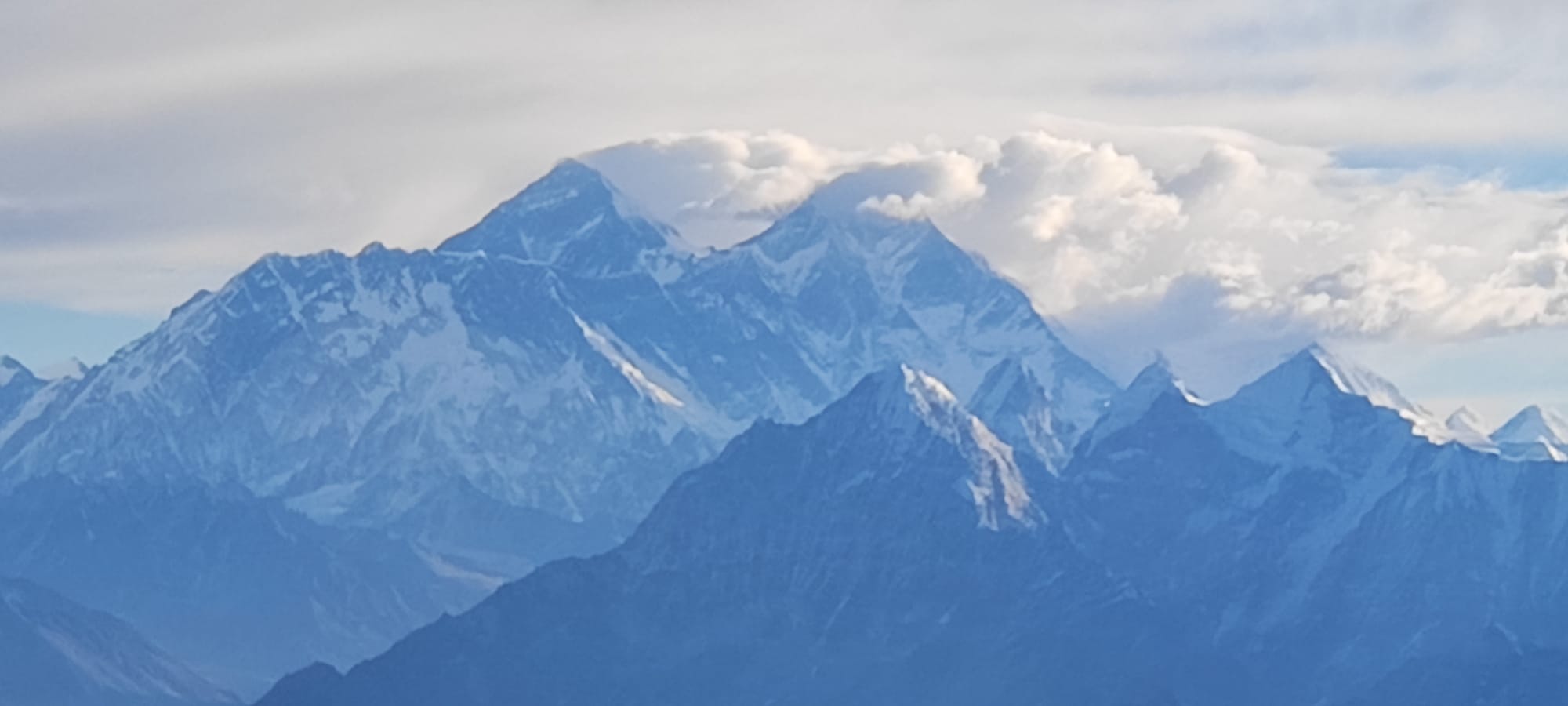

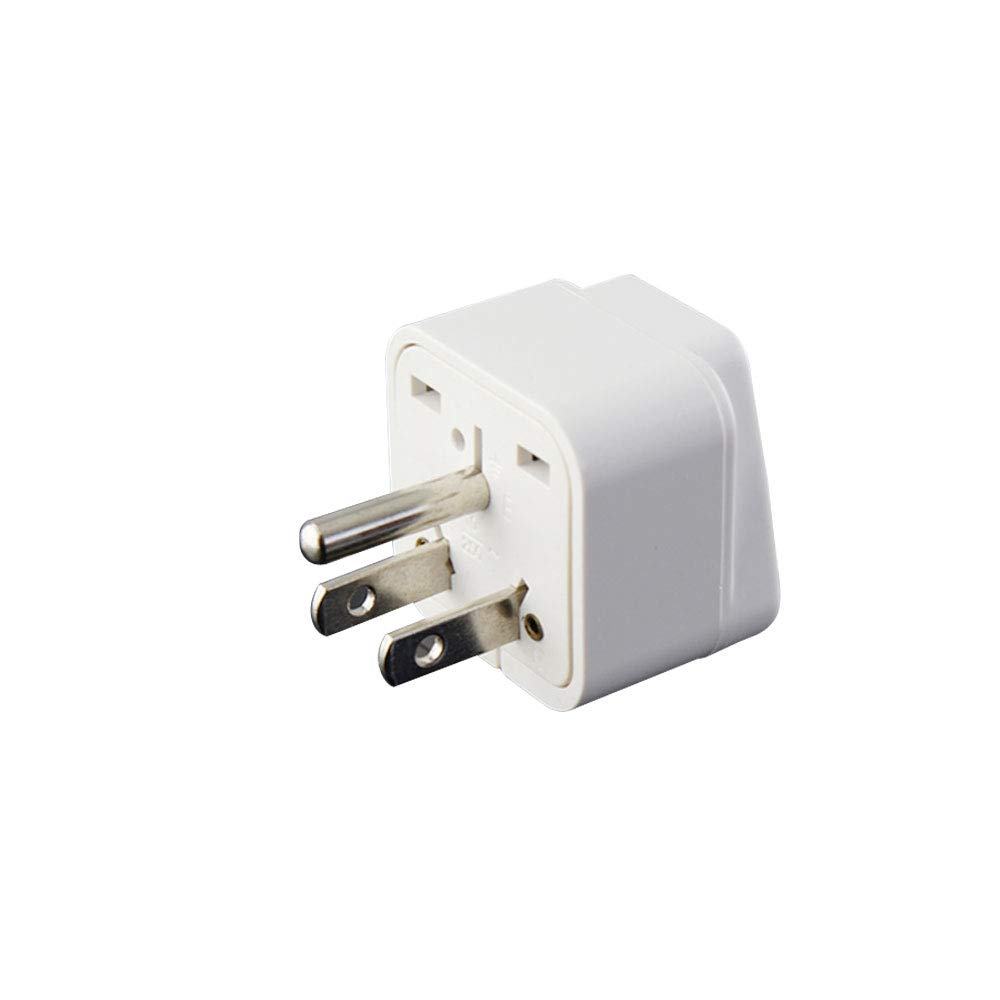
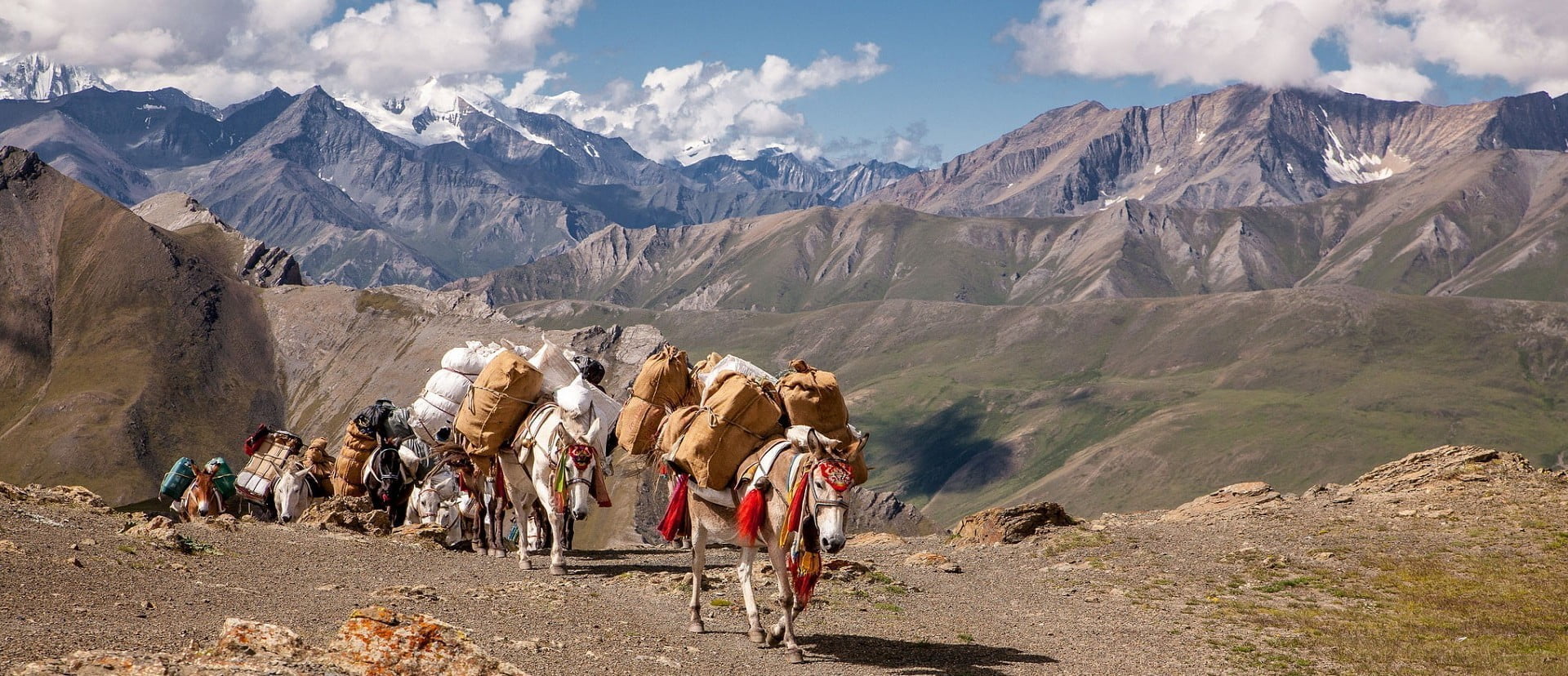
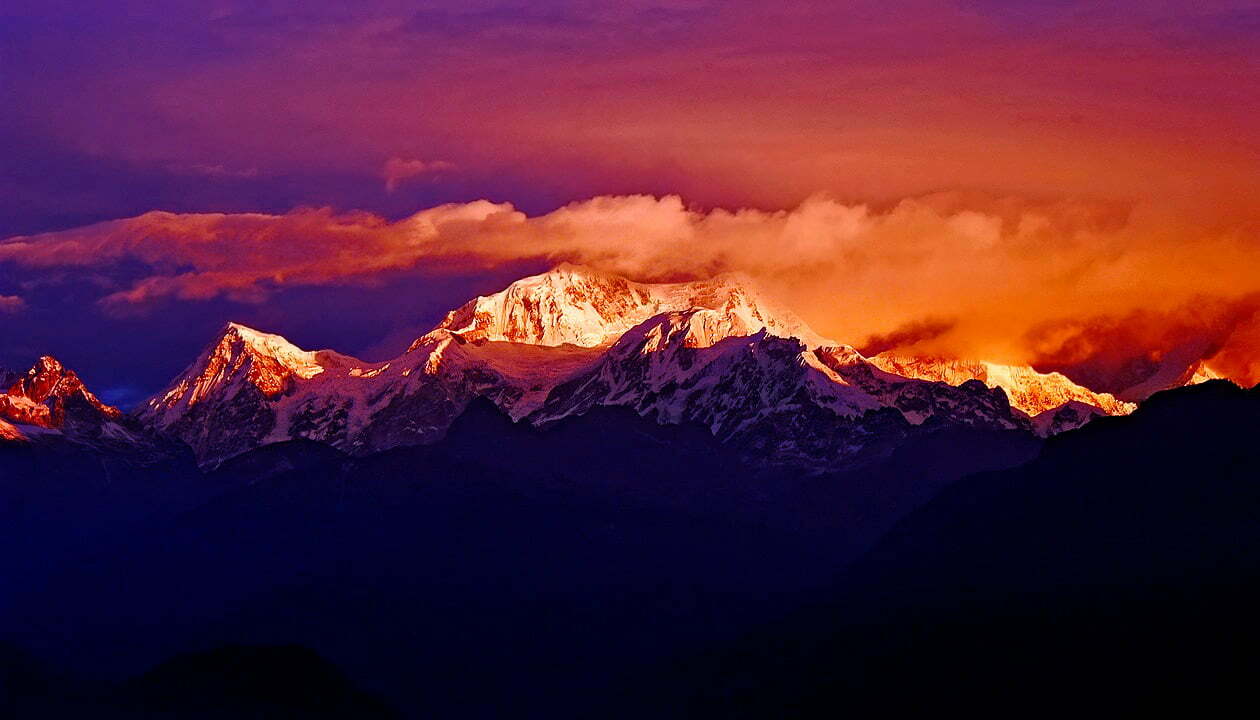



Write a Review